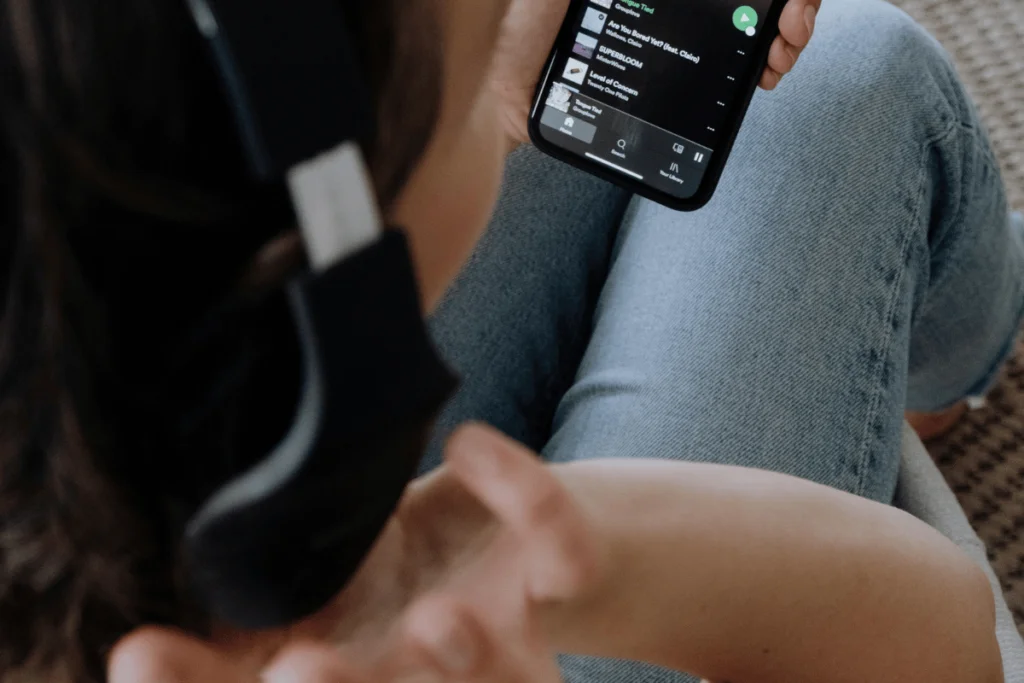Experiencing a slump in traffic? Sometimes, all you need is fresh content to draw more people to your site.
But what if you don’t have the brain space or the time to whip up something new?
The solution is to refresh old content and turn it into new posts.
This guide will teach you how to repurpose content to boost visibility, maximize resources, and keep your audience engaged.
TL;DR – How to Repurpose Content
Master the art of repurposing content with our ultimate guide below.
But if you’re too busy to read through the whole thing now, here’s a quick summary to get you started:
- Audit Existing Content
- Identify High-Performing Content
- Assess Audience Needs
- Choose Appropriate Formats
- Update and Refresh Content
- Maintain Brand Consistency
- Optimize for SEO
- Utilize Visuals and Multimedia
- Leverage Social Media
- Create a Content Calendar
- Track Performance
- Encourage User Engagement
- Cross-Promote Content
- Continuously Analyze and Iterate

What is Content Repurposing?
Repurposing content is similar to cross-posting. The only difference is that repurposing transforms existing content to fit other social media channels instead of posting it as is.
For example, if you have a high-performing blog post, you can reuse it by taking attention-grabbing quotes and turning them into catchy tweets.
You can even turn long-form articles into podcasts that are more easily accessible to people on the go.
Want to explore private podcasts? Sign up with Hello Audio to convert content into an audio format in minutes.
Why Should I Repurpose Content?
Recycling existing content allows you to maintain brand visibility without spending too much time brainstorming new ideas for blogs or social media posts.
If you’re a small team, you’re most likely wearing several hats, so you can’t be bogged down by one task when you have so much more on your plate.
You should also be repurposing content if:
- You want to maximize reach with high-performing posts: Repurposing makes high-performing posts work even harder for you. It also allows you to reach audiences you may not have tapped with previous formats.
- You’re way behind on your content schedule: If you have a massive backlog, you probably don’t have the time to create new content. That’s easily resolved by refreshing old pieces.
- You want a more efficient content creation process: Repurposing content doesn’t have to be something you do when you’re completely out of ideas. Incorporating it into your content repurposing workflow ensures you always have something in the pipeline.
- You want to convey a clearer message: Repetition is essential to making your message stick. Instead of letting content be buried in your archives, regularly refresh relevant posts to reinforce your message.
Top 5 Ways to Repurpose Content
Let’s look at the five most effective ways to repurpose old content:
1. Private Podcasts
Turn long-form content into private podcasts that subscribers can access on the go. Watch this instant demo by Hello Audio to see how to launch an audio feed in minutes.
2. Video Content
Take highlights from long videos, like YouTube tutorials or a Facebook live, and convert them into short one- to three-minute nuggets.
3. Blog Content
Take lengthy research reports, case studies, or ebooks and turn them into blog posts or refresh blog posts by updating information.
4. Social Media
Adapt existing content for different social media channels where your target audience will most likely pay attention.
5. Webinars
Identify key takeaways from webinars and whip up content, such as a blog post, short video, or X (formerly Twitter) thread.

14 Simple Steps to Repurpose Content
Breathing life into old content can be easier said than done, especially if you’ve never tried it before.
We’ve made sure you’ll find it a breeze with this step-by-step guide:
1. Audit Existing Content
Start by taking stock of what you currently have in your content library. Identify pieces that are relevant to current trends and your objectives.
You should also be repurposing evergreen content or pieces that stay relevant and fresh for a long time.
It’s evergreen if it’s not attached to a specific period (for example, one that doesn’t mention the pandemic) or addresses a need that remains true regardless of time.
2. Identify High-Performing Content
Focus on content that performed well in the past. Depending on your objectives, those may have drawn high traffic or meaningful engagement.
These pieces hint at what your target audience likes, helping you craft future content that gets their attention.
3. Assess Audience Needs
Study your target audience to determine their preferences and needs.
You can research your existing customers, create an ideal customer profile, and analyze your competition.
Here are some of the questions you should be asking:
- Which segments am I trying to reach?
- How do they spend their time online?
- Does my audience want to be informed or entertained?
- What types of posts do they engage with the most?
- How does my competition reach their target segments?
Further Reading: Check out the 3 Ways Private Podcasts Help You Connect with Your Audience.

4. Choose Appropriate Formats
Now that you understand what your audience wants, identify the channels and content formats that will allow you to target them effectively.
You can convert blog posts into videos, podcasts, or social media posts, depending on which formats resonate with your audience the most.
For instance, if your audience wants to be educated about a specific topic, you may repurpose case studies or infographics into podcasts. These allow for convenient learning, even on a busy schedule.
See how it works with Hello Audio’s free trial.
5. Update and Refresh Content
Earlier, we mentioned that you should repurpose evergreen content. That’s true. But that doesn’t mean you should repurpose only evergreen content.
You may have pieces with significant traction that contain outdated information. You can still use these by updating the information and tweaking the content to make it relevant.
6. Maintain Brand Consistency
Stay true to your brand voice and messaging when converting existing content to different formats.
You can ensure consistency by establishing clear guidelines for content across platforms and sticking to your brand’s personality when adapting old content for new channels.
If you’re reusing content that you published a while back, your style or voice may have already evolved, which means repurposing content could entail tweaking it to match how you want your brand to be perceived today.
7. Optimize for SEO
Repurposing content is an excellent way to bolster your SEO strategy, allowing you to target similar keywords with multiple pieces.
So, don’t forget to optimize any repurposed content for SEO, regardless of the new format.
Depending on how you convert content, that can mean incorporating updated keywords, refreshing the meta description, or adding SEO-friendly captions.
8. Utilize Visuals and Multimedia
Make your content more attractive with visuals, graphics, or interactive elements that grab your audience’s attention.
Content is king, but great visuals act as hooks that get people to stop scrolling and pay attention.
Interactive elements, like polls and surveys, also encourage people to spend more time on your page.

9. Leverage Social Media
Social media is your best friend when spreading the word about your brand. There are about 4.9 billion social media users globally. By 2027, this number could balloon to up to 6 billion.
To reach a wider audience, share your repurposed content across social media platforms–but choose the ones relevant to your audience.
Not all channels are equal, so assess where your audience will most likely pay attention to you.
10. Create a Content Calendar
You can wing it every now and then. Those bouts of inspiration and creative energy are fantastic when they happen. But when you’re juggling tasks left and right, you’ll want a content creation process geared towards ensuring you publish content consistently.
For this, you need a content calendar. It should include schedules not just for posting new content but also for repurposing old ones.
11. Track Performance
Monitor the performance of your repurposed content to measure its impact. Has it helped boost traffic? Has it encouraged meaningful conversations? Did it drive more leads?
Any insights you gain should inform your strategy and help you make necessary adjustments.
12. Encourage User Engagement
Aside from quantifiable metrics, user engagement and feedback are your most valuable tools for determining the impact of your repurposed content.
People don’t interact, however, unless a piece of content resonates with them. So your best bet for encouraging engagement is crafting content that speaks directly to them, targets precisely what they need, and incorporates elements that invite engagement.
These elements can be as simple as posing a thought-provoking question, a gamified portion of your piece, or a trend-worthy poll.
13. Cross-Promote Content
Maximize your content’s exposure by cross-posting it across various channels. Note, though, that you don’t have to be everywhere. You just have to be where your audience hangs out and where your message will be best received.
For instance, if you’re trying to reach the older generation (say, millennials), you’d want to be present on Facebook. But if you’re targeting teens or Gen Z, you might want to be noticed on TikTok.
Your brand’s message, campaign objectives, and personality are other factors determining the best platforms for you.
14. Continuously Analyze and Iterate
The work isn’t done when your content has been posted and cross-posted. What comes next is regularly reviewing your content repurposing strategy to see what works and what doesn’t.
This step is crucial for making improvements based on measurable metrics and audience feedback.

Top 5 Content Repurposing Tools
Here are five tools that will make repurposing content even easier for you:
1. Hello Audio
Hello Audio turns your content into private podcasts in minutes to reach even the busiest of audiences.
2. Instant Video Creator
Semrush’s Instant Video Creator converts blogs into videos and allows you to edit, such as adding voice-overs and captions.
3. AI Social Content Generator
The AI Social Content Generator, also from Semrush, automates content creation for social media–from content ideas to hashtags and more.
4. ChatGPT
ChatGPT allows you to turn blogs into video scripts and generate social media content.
5. Lumen5
Lumen5 creates videos from blogs and turns Zoom recordings into engaging video clips.
How Often Should You Repurpose a Piece of Content?
How often you repurpose a piece of content depends on how many channels you can adapt it for, how rich the material is, and how relevant it is at the moment.
Longer forms of content, such as live videos, seminars, educational articles, and case studies, have so much meat in them that you can take so many snippets to last you months.
Also, consider repurposing content starting from the content creation phase.
Instead of repurposing on the fly or when your ideas dry up, looking for ways to maximize each piece of content right from the start will help you plan your content more efficiently and maintain momentum.
Ideally, you should post at least twice a week on social media, which is a lot of content to churn out if you constantly have to come up with new posts.

10 Best Practices for Repurposing Content
Now that you’re ready to reuse your old content, these best practices are surefire ways to keep your repurposing strategy in tip-top shape:
1. Align with audience interests
Keep your audience’s preferences and needs as a priority when repurposing content. People engage with what resonates with them.
2. Maintain brand consistency
As you adapt content for new channels, stay aligned with your brand to help people recognize you more easily and allow your message to stick.
3. Update outdated information
Be a stickler for details, especially regarding data and other statistics on your repurposed content. It may seem like a small step, but it helps gain your audience’s trust by communicating that your content is fresh and credible.
4. Optimize for each platform
Each platform is unique, so how you optimize for Instagram may not be how you do for LinkedIn. Know how each channel works.
5. Incorporate SEO best practices
Your SEO strategy is vital to get your content noticed. Don’t neglect best practices like incorporating keywords and link building for maximum exposure.
6. Always use quality visuals
Your visuals act as hooks for your content, so only use high-quality, engaging photos and graphics.
7. Keep messaging clear & concise
Did you know that the average adult’s attention span is only 8.25 seconds? Yep! You have only this much time to get people to pay attention, so keep your message as clear and concise as possible.
8. Diversify content formats
Be creative when converting old content into new formats. Turn statistics into catchy graphics or blog excerpts into video clips. The possibilities are endless.
9. Monitor performance metrics
Monitor your content’s performance by looking at previously established KPIs and audience feedback. These will help you make improvements where needed and leverage what works.
For example, use these podcast metrics to analyze how it performs and what needs to change.
10. Encourage audience engagement
Using interactive elements and gimmicks like trend jacking (or jumping on a trending topic to gain traction) helps ensure your audience participates instead of simply scrolling through your content.

Frequently Asked Questions (FAQs)
Eager to know more about how to repurpose content? We’ve answered the most commonly asked questions below:
What’s the best way to update and repurpose old content?
The best way to update old content is to convert it into formats that fit new channels.
For instance, if you’re repurposing an old blog post, you can take snippets from the article and turn them into Instagram or X (formerly Twitter) threads.
Likewise, you can also repurpose your TikTok videos into webinars, GIFs, etc.
You should also keep the content fresh by updating data, such as statistics and other time-sensitive information.
How do you measure the effectiveness of repurposed content?
You can measure the effectiveness of a repurposed piece of content by reviewing your key performance metrics or KPIs. These depend on your campaign objectives or content strategy.
If you’re looking to increase brand visibility, you would likely be looking at metrics like web traffic and engagement.
What are the legal considerations to keep in mind when repurposing content?
If you’re repurposing copyrighted material by a different content creator, make sure to ask for permission.
Giving them credit on social media is not enough and could still open the door to lawsuits if no prior consent was given for repurposing the content.
Conclusion
Creating content is fun! But it takes a lot of time and requires plenty of brain space.
Thankfully, you don’t have to be churning out new content ideas all the time–all you need is a repurposing strategy, and you’re good to go!
And that’s where Hello Audio comes in! Turn blog posts into podcasts with Hello Audio, convert long seminars into engaging video clips, or transform quotable quotes into Instagram threads.
Remember – even a single piece of content can go a long way for your brand’s reach and exposure.












